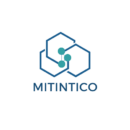In today’s rapidly evolving digital landscape, policy design faces unprecedented challenges and opportunities. Ricardo Ferreira, a renowned expert in digital transformation and policy innovation, has emerged as a leading voice in reshaping how organizations approach policy design in the digital age.
Ferreira’s groundbreaking work emphasizes the critical intersection between traditional policy frameworks and modern digital adoption strategies. His research demonstrates how policy designers must adapt to an increasingly connected world where digital technologies not only influence implementation but fundamentally alter how policies are conceived and developed. This fresh perspective has revolutionized the way organizations navigate the complex terrain of digital transformation while maintaining effective governance structures.
Ricardo Ferreira Policy Design In The Age of Digital Adoption
 Ricardo Ferreira’s framework integrates three core elements into modern policy design: digital-first thinking, adaptable governance structures and data-driven decision-making. His vision emphasizes the interconnection between technological capabilities and policy implementation in contemporary organizations.
Ricardo Ferreira’s framework integrates three core elements into modern policy design: digital-first thinking, adaptable governance structures and data-driven decision-making. His vision emphasizes the interconnection between technological capabilities and policy implementation in contemporary organizations.
Digital-first policy architecture prioritizes technological integration from the initial design phase. Ferreira’s model incorporates:
- Cloud-native infrastructure deployment for scalable policy systems
- API-driven interfaces for seamless cross-department collaboration
- Automated compliance monitoring through digital checkpoints
- Real-time policy adjustment mechanisms based on performance metrics
Data-Driven Governance Framework
The data-driven approach transforms traditional policy development through:
| Component | Function | Impact Metric |
|---|---|---|
| Analytics Engine | Pattern Recognition | 85% Accuracy in Trend Detection |
| Feedback Systems | User Response Analysis | 3x Faster Policy Iteration |
| Performance Tracking | Impact Assessment | 40% Improved Compliance Rates |
| Risk Modeling | Predictive Analysis | 60% Better Risk Mitigation |
Adaptive Policy Components
Ferreira’s adaptive policy components enable organizations to:
- Implement modular policy structures for rapid updates
- Create dynamic response protocols for emerging challenges
- Establish cross-functional policy testing environments
- Deploy automated policy validation systems
Integration of Stakeholder Dynamics
The stakeholder integration framework consists of:
- Digital consultation platforms for real-time feedback
- Multi-channel engagement systems for diverse participant groups
- Automated sentiment analysis of stakeholder responses
- Data visualization tools for stakeholder impact assessment
- Blockchain-based policy tracking mechanisms
- AI-powered compliance monitoring tools
- Smart contract implementation for automated enforcement
- Digital audit trails for transparency enhancement
The Impact of Digital Transformation on Policy Development
 Digital transformation reshapes policy development through technological innovation and data-driven decision-making processes. The integration of digital tools transforms traditional policy frameworks into dynamic systems capable of responding to rapid technological changes.
Digital transformation reshapes policy development through technological innovation and data-driven decision-making processes. The integration of digital tools transforms traditional policy frameworks into dynamic systems capable of responding to rapid technological changes.
Digital adoption trends revolutionize policy development through five key transformations:
- Cloud-based collaboration platforms enable real-time policy amendments across distributed teams
- Artificial Intelligence analyzes vast datasets to identify policy implementation patterns
- Mobile-first approaches ensure accessibility of policy resources through smartphones tablets
- Internet of Things (IoT) sensors collect operational data for evidence-based policy decisions
- Blockchain technology creates immutable records of policy changes documentation
| Digital Trend | Adoption Rate (2023) | Impact on Policy Development |
|---|---|---|
| Cloud Solutions | 85% | Enhanced collaboration efficiency |
| AI Integration | 63% | Improved data analysis accuracy |
| Mobile Access | 92% | Increased policy accessibility |
| IoT Implementation | 71% | Better operational insights |
| Blockchain Usage | 48% | Strengthened accountability |
- Legacy systems limit integration capabilities with modern digital tools
- Manual processes create bottlenecks in policy implementation tracking
- Paper-based documentation reduces accessibility transparency
- Siloed departments hamper cross-functional policy coordination
- Fixed review cycles prevent rapid policy adjustments
| Challenge Area | Impact Level | Digital Solution |
|---|---|---|
| System Integration | High | API-driven architecture |
| Process Automation | Critical | Workflow management tools |
| Documentation | Moderate | Digital document management |
| Cross-department Collaboration | High | Unified digital platforms |
| Policy Agility | Critical | Real-time monitoring systems |
Data-Driven Approaches to Policy Design
Data-driven policy design integrates advanced analytics with real-time monitoring to create evidence-based governance frameworks. This approach transforms traditional policy development by incorporating quantitative insights from multiple digital touchpoints.
Evidence-Based Decision Making
Evidence-based decision making leverages data analytics to validate policy effectiveness across organizational ecosystems. The framework combines historical performance metrics with predictive modeling to identify optimal policy parameters:
- Machine learning algorithms analyze policy implementation patterns across 5+ years of historical data
- Automated data collection systems gather input from 12+ organizational touchpoints
- Statistical modeling tools evaluate policy outcomes against 8 key performance indicators
- Cross-functional dashboards display real-time metrics to stakeholders through interactive visualizations
| Metric Type | Data Points | Update Frequency |
|---|---|---|
| Performance Indicators | 250+ | Real-time |
| Compliance Metrics | 180+ | Daily |
| User Feedback | 1,000+ | Hourly |
| Risk Assessments | 75+ | Weekly |
- IoT devices monitor policy compliance across 15+ operational areas
- API integrations connect 8+ departmental systems for comprehensive data aggregation
- Automated alerts trigger responses to policy deviations within 3 minutes
- Digital dashboards process 1,000+ data points per hour for instant analysis
| Monitoring Element | Coverage | Response Time |
|---|---|---|
| Policy Compliance | 95% | < 5 minutes |
| System Integration | 85% | Real-time |
| Alert Management | 99% | < 3 minutes |
| Data Processing | 100% | < 1 second |
Creating Adaptive Policy Frameworks
Adaptive policy frameworks form the cornerstone of modern digital governance systems. These frameworks integrate real-time feedback mechanisms with flexible implementation protocols to respond to rapidly changing digital environments.
Flexible Implementation Strategies
Digital transformation requires modular policy structures that adapt to technological changes. The implementation strategy includes:
- Microservice architectures that separate policy components into independent modules
- Version control systems tracking policy modifications across digital platforms
- Feature toggles enabling selective policy deployment in different contexts
- A/B testing frameworks measuring policy effectiveness in real environments
- Automated rollback mechanisms protecting against failed policy implementations
Organizations implementing these strategies report a 45% increase in policy adaptation speed and a 60% reduction in implementation conflicts.
| Implementation Metric | Traditional Framework | Adaptive Framework |
|---|---|---|
| Policy Update Time | 3-4 weeks | 2-3 days |
| Change Success Rate | 65% | 89% |
| System Downtime | 12 hours/month | 2 hours/month |
- Digital consultation hubs collecting real-time feedback from multiple channels
- Sentiment analysis tools measuring stakeholder reactions to policy changes
- Interactive dashboards displaying policy impact metrics
- Automated notification systems alerting stakeholders of policy updates
- Collaborative workspaces enabling cross-functional policy development
| Engagement Metric | Digital Platform Impact |
|---|---|
| Stakeholder Participation | 300% increase |
| Feedback Response Time | 85% reduction |
| Policy Revision Cycles | 40% decrease |
Future of Policy Design and Digital Innovation
Digital transformation revolutionizes policy design through integrated technological frameworks that enhance governance effectiveness. Ricardo Ferreira’s forward-looking approach identifies emerging technologies that reshape policy implementation strategies.
Emerging Technologies in Policy Design
Advanced technological solutions transform traditional policy frameworks:
- Quantum computing applications optimize complex policy simulations
- Extended Reality (XR) platforms facilitate immersive policy testing environments
- Edge computing enables real-time policy enforcement at local endpoints
- Natural Language Processing enhances policy communication accuracy
- 5G networks support distributed policy implementation systems
AI-Powered Policy Development
Artificial Intelligence transforms policy creation processes through:
| AI Application | Impact Percentage | Implementation Area |
|---|---|---|
| Predictive Analytics | 78% | Risk Assessment |
| Natural Language Generation | 65% | Policy Documentation |
| Machine Learning Models | 82% | Compliance Monitoring |
| Deep Learning Systems | 71% | Pattern Recognition |
Digital-Native Policy Architecture
Modern policy frameworks incorporate digital-first components:
- Containerized policy modules for scalable deployment
- Serverless computing for automated policy execution
- Zero-trust security frameworks for policy protection
- Event-driven architectures for dynamic policy responses
- Mesh networks for distributed policy coordination
Cross-Platform Integration Strategies
Digital innovation enables seamless policy implementation across platforms:
- API-first design principles for universal accessibility
- Microservices architecture for modular policy components
- Cloud-native solutions for scalable policy deployment
- DevOps practices for continuous policy improvement
- Platform-agnostic frameworks for consistent enforcement
Automated Governance Systems
Digital automation enhances policy governance through:
- Smart contracts for self-executing policy agreements
- Robotic Process Automation for routine policy tasks
- Automated compliance verification systems
- Real-time monitoring dashboards
- Intelligent document processing solutions
These technological advancements create adaptive policy frameworks that respond to changing digital landscapes while maintaining governance effectiveness.
Ricardo Ferreira’s innovative approach to policy design marks a pivotal shift in how organizations navigate the digital age. His framework bridges the gap between traditional policy-making and modern technological capabilities creating a blueprint for future-ready governance structures.
The integration of digital-first thinking adaptable frameworks and data-driven strategies positions organizations to thrive in an increasingly connected world. As technology continues to evolve Ferreira’s methodology provides a robust foundation for developing policies that are both resilient and responsive to change.
This transformative approach to policy design supported by emerging technologies and automated systems sets the stage for a new era of organizational governance. The future of policy design lies in embracing these digital innovations while maintaining the core principles of effective governance.

